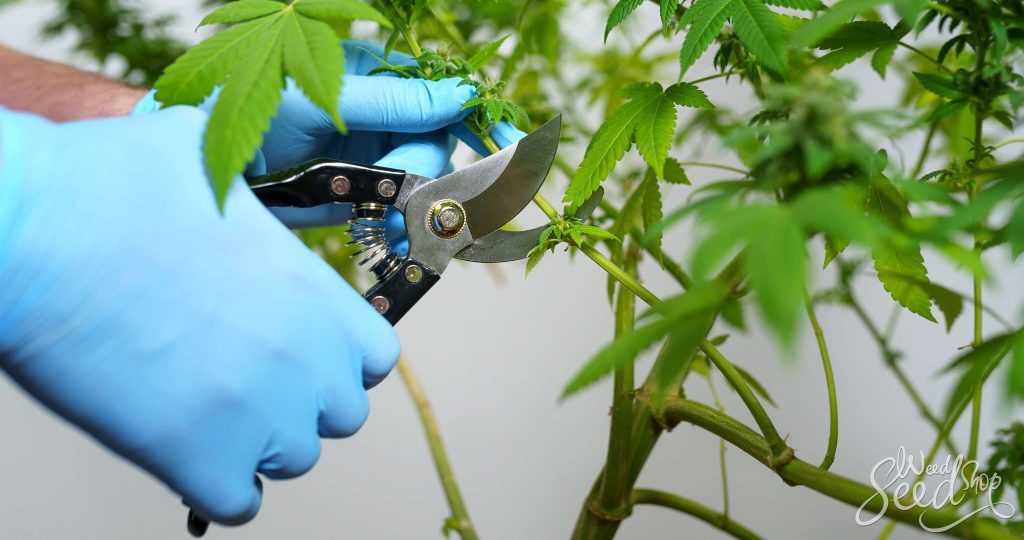Discover the power of monster-cropping cannabis plants! Up your yields and unlock unique genetic variations by cloning from flowering plants. Learn the tips and techniques for successful re-vegging in our latest article. Don’t miss out on this game-changing technique!
- What is monster cropping?
- How does monster cropping work?
- Selecting a plant
- How to clone a flowering plant
- Caring for a clone
- Planting the clones
- Can I monster crop autoflowering seeds?
- Benefits of monster cropping
- Risks of monster cropping
- Re-vegging cannabis plants
- What is re-vegging?
- How to reveg a plant after harvest
- How long should I reveg my plants for?
- Can I reflower a re-vegged plant?
- Tips and tricks for successful re-vegging
Monster cropping and re-vegging are two terms that are commonly interchanged. While there’s a great deal of overlap between them—and the end result is typically the same—they aren’t identical. Whichever one you choose, though, you’ll see unbelievable yields if done properly.
What is monster cropping?
Monster cropping is a technique for growing truly massive weed plants. Basically, the process involves taking clones from flowering plants and forcing them back into the vegetative stage. In contrast to the more traditional method where clones are taken from mother plants in the vegetative stage, monster cropping focuses on cloning plants that are already in the flowering phase.
The basic idea here started when some growers began experimenting with techniques aimed at maximizing their yields and preserving genetics. Over time, it’s grown in popularity among growers as an effective—if time-consuming—method for increasing yields and efficiency.
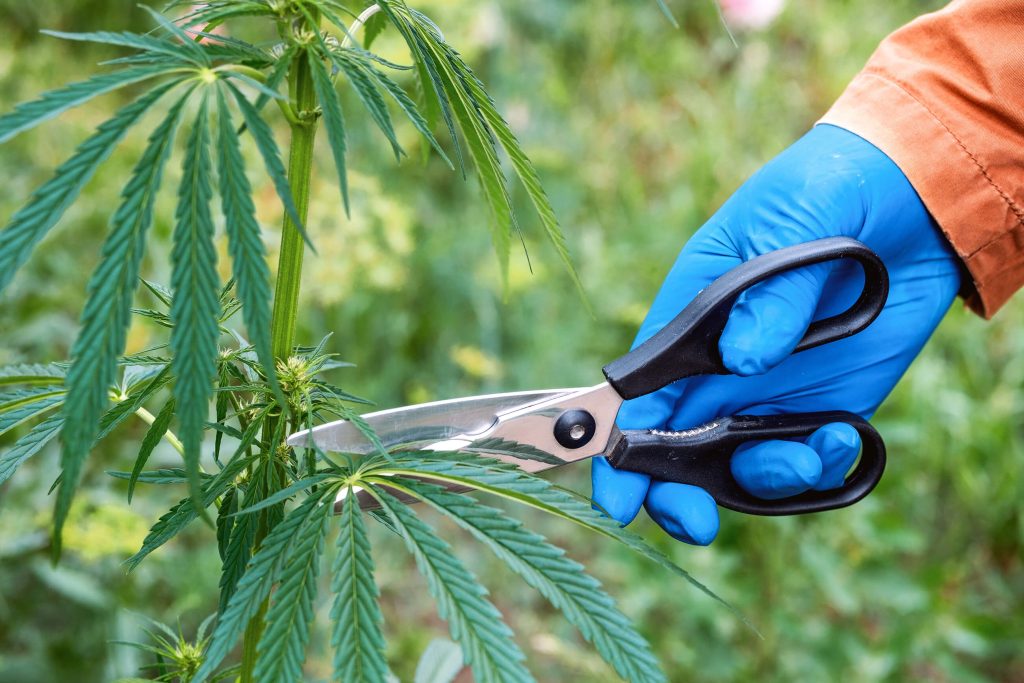
The principle behind monster cropping lies in the phenomenon known as cannabis regeneration, or re-vegging. When flowering plants are suddenly put back into the flowering stage (by changing the light schedule), they revert back to a pattern of growth and start producing new shoots and leaves.
After some time, these plants grow to an enormous size and can produce kilograms of buds per plant. This process takes a long time and there’s a lot to keep in mind, so let’s just get to it.
Monster cropping & re-vegging: Are they the same?
Yes and no. Monster cropping is a term for the general practice of cloning a flowering plant while re-vegging (or cannabis regeneration) is the term for returning a plant to a vegetative state. That might sound like a subtle difference, and it is. Oftentimes, these two terms can be used interchangeably and for the purposes of this article, we’ll stick to the term “monster cropping”. However, it’s worth pointing out the major difference between the two: timing.
- Monster cropping: Waiting for a plant to begin flowering for a few weeks before taking clones and forcing those clones back to flowering.
- Re-vegging: Harvesting a plant’s flowers without killing it and forcing it back to a vegetative state.
These two techniques can be used together and many growers who practice one practice both. We’ll go over the specifics of each further down.
How does monster cropping work?
To get started, the first thing you need to do is pick a proper plant. The entire process is incredibly stressful and a plant needs to be able to endure the arduous process.
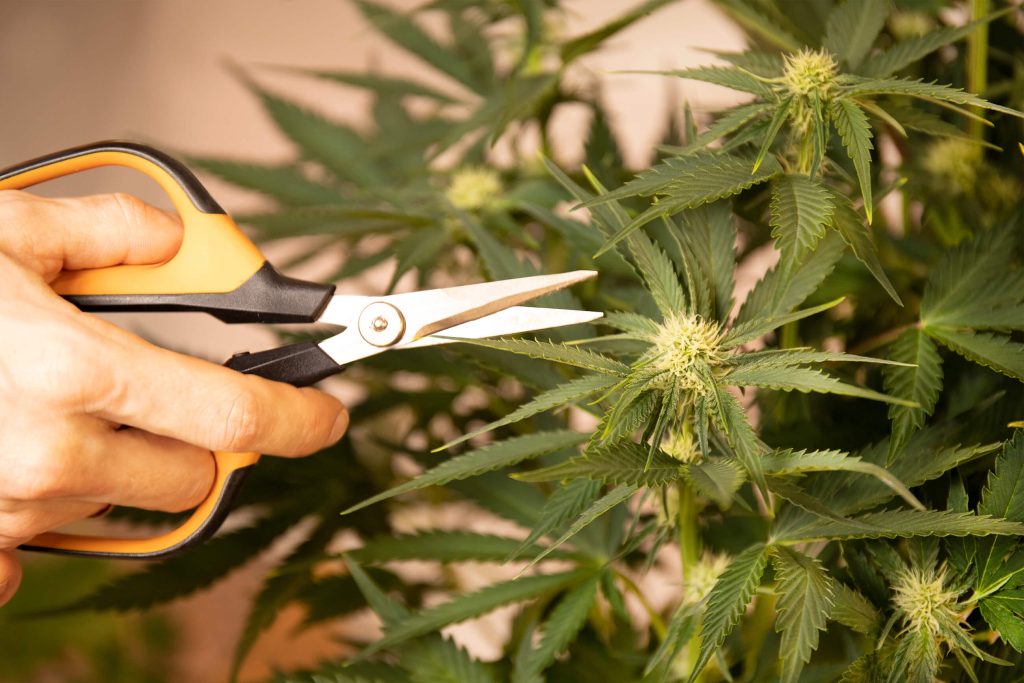
Selecting a plant
One of the main goals of this technique is to preserve a plant that has performed beyond expectations. Therefore, what you’re looking for will depend on your desired traits. Things like robust growth, resin production, or exceptional bud quality can all mark a plant as a potential mother. Once identified, the next step is to take clones from the flowering branches.
How to clone a flowering plant
Overall, the process for cloning a flowering plant is no different than a vegging one. While there’s actually a fair bit that goes into properly cloning a plant, the basic process looks like this:
- Be sure to pick a sturdy, healthy branch. You should select one with no fewer than two nodes on it.
- Cut the clone off as close to the main stalk as you can without damaging the mother plant. If you can, use a box cutter or razor but sharp scissors are OK, too.
- Once you’ve removed the clone, take a razor blade and cut just under the lower node on the fresh cutting at a 45° angle to maximize the area of the rooting surface.
- Immediately apply a rooting hormone to the fresh cutting and place it directly into a rooting cube
- Lastly, remove any extra leaves near the bottom as well as any flowers.
- Place them immediately under a vegetative light schedule.
Caring for a clone
Cloning a plant is incredibly stressful and not every clone will survive the process. But there are things you can do to promote new vegetative growth from flowering clones. Maintaining a humidity level of around 70% and providing a mild nutrient solution will support the development of new shoots and leaves.
At this stage, the clones don’t have roots so they will need to be watered by spraying them lightly. To help them absorb this, it’s often a good idea to cut a very small bit off the tip of the leaves.
With proper care and attention, the flowering clones will undergo re-vegging, gradually transitioning into vigorous vegetative growth. It is essential to monitor the clones closely during this phase, adjusting the nutrient levels and environmental conditions as needed. Once the clones have established strong roots and robust growth, they can be transplanted into larger containers and continue their growth as regular vegetative plants.
Planting the clones
Once your clones have properly taken root (usually 3-14 days) they’re ready to be planted. At this stage, they are effectively seedlings again and should be treated just like any other plant. However, since these clones were taken from a flowering plant, they require extra time to properly vegetate. This can take several additional weeks.
During this time, the plant’s growth is likely going to be slow and erratic. This isn’t a natural thing for it to be doing and the results can be difficult to work with. Training is incredibly important and needs to be done early to prevent things from getting out of hand.
Can I monster crop autoflowering seeds?
Since monster cropping and re-vegging require the plants to effectively “go backward”, no, autoflowering seeds cannot be used for either of these methods.
Benefits of monster cropping
OK, that’s a lot of time and effort; why bother? There are several reasons that a grower might choose monster cropping.
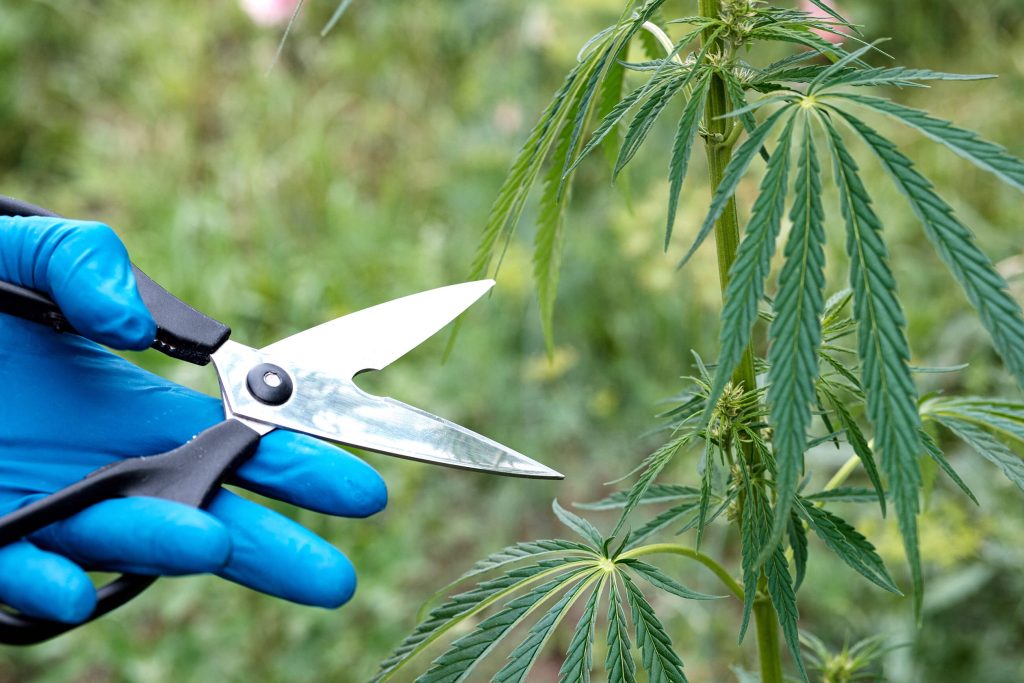
1. Preserving genetics
This is probably the main reason that someone chooses to go through all the trouble of monster cropping. Sometimes a plant just goes above and beyond your expectations and harvesting it would waste these valuable genes. By taking clones and revegging them, you can create a mother plant with those same genetics.
2. Increased yield
By forcing a flowering clone to re-enter the vegetative state, you trigger an explosion of growth. If you’ve ever seen those truly massive cannabis trees that seem bigger than possible, this is how it’s done. A properly monster-cropped plant can grow more than a kilogram of buds.
3. Greater efficiency
Monster cropping can help you to streamline your grow schedule. While it does take longer to start up, once a regular cycle has been established, a perpetual harvest becomes a very real option.
In theory, monster-cropped clones can be re-vegged over and over again, each time growing even bigger and more productive. However, this takes a considerable amount of time and isn’t without further risk.
Risks of monster cropping
There’s no perfect system and monster cropping is difficult. There’s always a chance of things going wrong and you can ruin an entire harvest if you’re not careful.
1. Stress on plants
Cloning a flowering plant stresses both the mother and the clones immensely. This can have a strong impact on the overall health of the flowering plant, potentially reducing its yield, quality, and potency.
2. Slower recovery and growth
Re-vegged clones will take significantly longer to recover and start growing again compared to clones taken from vegetative plants. This extends your overall cultivation time, affecting the efficiency of your grow over the first several months.
3. Increased complexity and care
Monster cropping requires a great deal more work compared to traditional growing methods. Close monitoring of environmental conditions, nutrient levels, and lighting cycles are all needed for successful re-vegging.
4. Going too far
As mentioned, once a plant has been revegged once, it can be flowered and revegged again and again. Each time, you’ll get more new branches. However, these are likely to be smaller and thinner, and eventually, they’ll stop being able to support the flowers.
Re-vegging cannabis plants
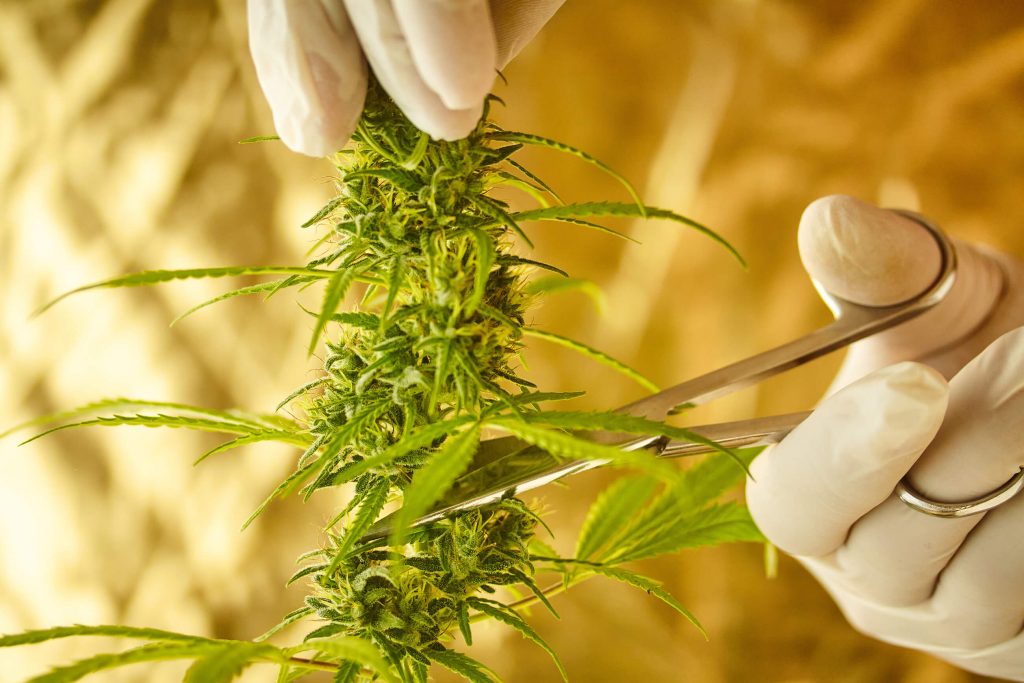
Like monster cropping, re-vegging requires putting a flowering plant back into a vegetative state. However, there is a major difference in timing and technique. While monster cropping is done before harvest, re-vegging happens after.
What is re-vegging?
As the name suggests (and as we’ve previously discussed) re-vegging is the process of forcing a plant back into a vegetative state. For the purposes of discussion here, though, re-vegging is a very specific act.
Once a plant is ready to be harvested, most growers simply cut it down to let it dry. This is certainly the fastest and easiest way but, unfortunately, this kills the plant. It’s always a little sad to chop down that amazing plant that grew the densest buds you’ve ever seen. Well, with re-vegging, you don’t have to.
It’s completely possible to harvest flowers from a plant without killing it. Afterward, what’s left can be placed back under a vegetative light schedule and, in a few weeks, it will start growing again. Much like monster-cropped clones, this growth will be erratic and slow but also truly robust.
How to reveg a plant after harvest
This is one of the most advanced and complicated ways of growing and should be approached with great care. Mistakes during this process will kill the plant that you’re trying so hard to save.
While harvesting the plant you want to reveg, start by removing only the largest branches and flowers. This is a harvest, after all, so be sure to remove everything of value. However, it is incredibly important to leave some leaves, branches, and even flowers during this process. After all, the plant still needs to photosynthesize.
Once this is done, all you need to do is return the plant to a vegetative light cycle and be sure to change its nutrient levels to match. Over the next few days, the flowers will start to die and can safely be plucked off. Soon, you’ll start seeing new growth but it will look very different from what you might expect.
These new leaves will have strange shapes and may only have a single finger. This is normal and a sign that the plant is properly reverting to a growth phase. Be patient and you’ll soon start seeing proper growth again.
During this time, the plant is highly susceptible to pests, diseases, and new stresses. This is the most dangerous time for a plant and extra care needs to be taken to make sure that it has every chance to return to life.
How long should I reveg my plants for?
There’s no one answer for this and it will depend on exactly what you want. If your goal is to create a new mother plant, then you’ll need to keep this in a perpetual state of vegetating. If you’re looking to reflower this plant, then be sure to give it at least 4-8 weeks to properly heal and produce adequate new growth.
Can I reflower a re-vegged plant?
Yes, absolutely. However, be prepared for smaller yields. Unlike monster cropping, reflowering a harvested plant is not likely to produce any more weed, in fact, it’s almost certainly going to produce less the second time around.
If your goal is to grow the most productive plants, monster cropping is for you. If your goal is to preserve genetics in a new mother plant, then you may want to consider re-vegging.
Tips and tricks for successful re-vegging
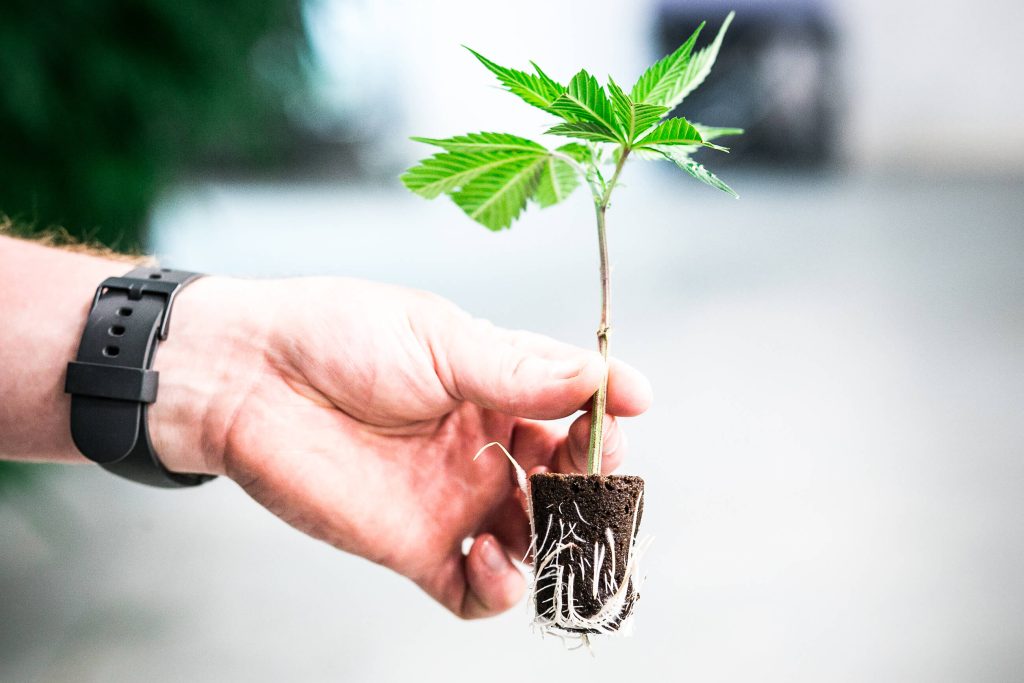
1. Choose healthy plants
Be sure to pick only the most robust and disease-free mother plants with desirable traits. There’s always a chance of killing a plant during this, so pick one with the best odds of survival.
2. Take clones at the right time
Take your clones from the lower branches of flowering plants when they have enough foliage. A good branch should have at least 2 nodes of growth.
3. Maintain a proper environment
Monitor environmental factors like temperature, humidity, and light to create optimal conditions for re-vegging. Aim for a humidity level of around 70% and provide a consistent light cycle of 18-24 hours per day.
4. Provide proper nutrition
Adjust the nutrient levels and feed the re-vegged clones with a mild nutrient solution suitable for vegetative growth. Avoid overfeeding to prevent nutrient burn or other nutrient-related issues.
Whether you choose monster cropping or re-vegging, be ready for a time-consuming and risky process. By taking the care to wait and do it all properly, though, you can up your yield, preserve desired genetics, or just grow the single largest plant you’ve ever seen.
Have you ever tried monster cropping or re-vegging? What issues did you have? Was it worth it? Let us know down in the comments!




